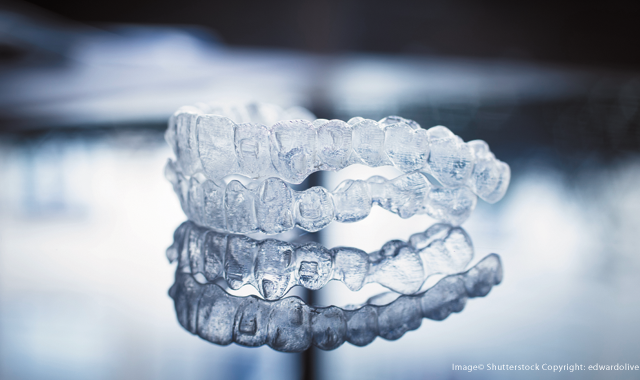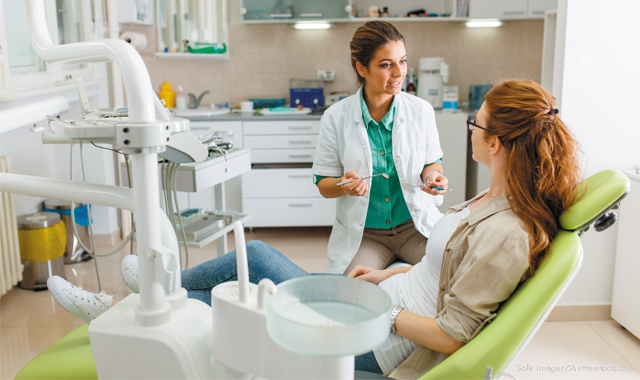6 cosmetic dentistry procedures every practice should offer
More patients are demanding cosmetic dentistry treatment, so offering these procedures could help boost your patients' satisfaction and your practice's bottom line.
Thanks to social media - particularly “Instagram models” - patients’ interest in dental procedures is rising. They’re no longer avoiding their regular dental appointments, instead trading dread with enthusiasm. They know that dentists can help them get that Instagram-worthy smile, and they’re all in.

At least, that’s what Sarah Jebreil, DDS, AAACD, says. She practices in Newport Beach, California, “where everyone wants whiter-than-white teeth,” including her 80-year-old patients, she says.
“Because of social media, patients are very aware of what options are available to them and they know what they want to look like when the treatment is completed,” she says. “They are no longer asking what can they do to look better. They are coming in with a treatment plan that they have in mind from what they have seen and read about online.”
Trending article: Why cosmetic dentistry matters to every practice
Because patients are often coming to dentists with a clear idea of the treatment and results they want, it’s important that dentists discuss the options available, she says.
“We need to really understand what it is they really want and if it is in fact achievable. If it’s not, we need to guide them to a more realistic option,” she says.
For practices trying to keep up with their patients’ demand, here are six cosmetic procedures that will help build your list of services.
Click through the slides to view the procedures.


1. Whitening
Teeth whitening is the most basic cosmetic dental service and has been offered for more than 30 years. It’s often considered the foundation of cosmetic treatment. Once patients request or receive whitening, they’re more inclined to think about other steps they could take to improve their smile.
“When patients come in to whiten their teeth, they often say, ‘They’re whiter, but what about this corner?’ Or, ‘What about this tooth that didn’t get white? What about these restorations that don’t match?’ Or, ‘I like my white teeth, but I want them straighter,’” says John F. Weston, DDS, FAACD. “That leads to conversations about things like Invisalign, orthodontics, replacing restorations, or veneering teeth. It’s an excellent way to start a dialog about cosmetic options.”
For practices that don’t yet offer whitening services, products like Philips Zoom whitening are a good place to start, but be sure to research your options and choose the system that works for you, advises Tanya L. DeSanto, DDS, FICD.
Related reading: Creating pearly white smiles
“If you can have somebody leave your office with whiter teeth than they walked in with, you have impacted their life in such a positive way,” she says. “It’s instantaneous and exciting for the patient and it’s such a great service.”
Unfortunately, the American diet is saturated with acidic and sugary foods that not only damage our teeth but affect their natural brightness, she says. Red wine, soda, tea, and cigarettes are all common culprits. But Dr. DeSanto says it’s a “win” if dentists can give their patients the white color they had in their teens. And to do that in one visit is a huge benefit for your patients that won’t go unnoticed. Another part of what makes it such a great service is its affordability, especially compared to other cosmetic procedures. The greatest benefit is to the dental practice.
“It feeds the fire,” Dr. DeSanto says. “Patients want to know what else they can do. They might want to change their fillings or straighten out some teeth that have been bothering them. There are all kinds of little things they can do that aren’t expensive.”
She adds that people often assume that cosmetic procedures are too expensive, as insurance typically doesn’t cover anything that’s not medically necessary. But sometimes something as simple as smoothing an edge of a teeth takes under a minute, and it doesn’t have to be expensive.



2. Minor recontouring
Another quick but effective option is minor recontouring, which every dentist should learn about, says Betsy Bakeman, DDS, FAACD.
More from the author: 8 ways to make insurance less of a pain
“I think every dentist should learn how to do gingival recontouring properly so that the changes can stay put,” she says. “A lot of patients with short teeth and a gummy smile aren’t even aware gingival recontouring with periodontal plastic surgery is an option.”
She adds that putting the tissue where it needs to be is all the enhancement that some patients need, so it’s essential that dentists interested in cosmetic dentistry learn how to do minor, predictable adjustments, from crown lengthening to gingivectomy procedures.



3. Aligner therapy
A common treatment that patients often ask about is aligner therapy, especially now that Invisalign and ClearCorrect dominate the adult orthodontics scene. Therefore, it’s essential for practices to venture into this arena, says Dr. Weston. But that doesn’t mean they have to offer the treatment in-house.
“I think every office should offer some form of tooth alignment procedures, whether referred out to an orthodontist or provided in-house,” he says. “Patients can appreciate a more modern approach that’s done without brackets and wires, so I think it’s good to offer a clear aligner therapy for straightening teeth.”
Dr. Jebreil believes that all dentists should offer clear aligner therapy. In fact, it’s a huge part of her practice.
Trending news: The risks and rewards of mail-order braces
“Often times patients come in for a cosmetic consult with beautiful, healthy teeth that are just slightly misaligned and it would be a travesty to cut down every tooth and veneer them,” she says. “My go-to treatment is Invisalign.”
Dr. Jebreil says that orthodontics is an essential first step if the patient needs additional work.
“If you can get the teeth in the right position, you don’t have to remove as much tooth structure,” she says. “This allows your dentistry to be much more conservative. You can even set up a veneer case with Invisalign by expanding the buccal corridors and evening out the gingival levels.”
For Dr. Jebreil, starting small and using clear aligners helped her build the confidence needed for more intensive cosmetic procedures.



4. Direct bonding
In addition to whitening, clear aligner therapy and minor recontouring, dentists can drastically improve the health and appearance of their patients’ teeth by offering composite resins.
“We have so many great materials now, so it’s important that dentists learn how to best use them,” Dr. Bakeman says. “We can change the shape, contours, length and color of teeth with composite resin and work so the resin blends seamlessly.”
While direct resin bonding is a reasonably affordable and conservative procedure to Dr. Bakeman, she says that dentists need to understand tooth shapes.
Related reading: The surprising rewards of cosmetic dentistry
“We started to hand the knowledge and mastery of tooth shapes, contours and arrangements over to the ceramists, but to excel in cosmetic dentistry, we really have to understand tooth shape and anatomy and how to design contours properly and beautifully,” she says.
For Dr. Weston, not offering direct bonding means putting the practice at risk of losing patients.
“In my opinion, dentists that do everything with porcelain are simply not going to be as successful,” he says. “Direct bonding in the anterior and replacing posterior amalgams are an important service to offer because some patients cannot afford indirect ceramic procedures on all teeth.”
Fred A. Peck, DDS, AAACD, offers a few solutions to dentists looking to start offering direct bonding services. Look for the small chips on front teeth or patients who have some discolored and visible bonding.
“We all have those in our practice, it’s just a matter of who’s going to be able to treat it well,” he says. “You have to have confidence that you can do it so that the patient accepts the treatment.”
He also advises taking before-and-after photographs to judge your work and to show other patients what you can do.



5. Indirect porcelain veneers and crowns
It’s also important for dentists to offer indirect porcelain veneers and crowns. For Dr. Weston, it’s critical to have a foundation for doing the procedure correctly. It’s also essential to have the support of a good ceramist, he says.



6. Anterior implant-retained prostheses
“When restoring terminal dentitions, we can do some amazing cosmetic transformations using implant-retained full dentures,” Dr. Weston says. “These procedures can profoundly change lives for patients.”
Using the AACD to build a foundation of knowledge is crucial first step, he says. While the basics of implant treatment are taught in school, he says they usually involve single posterior teeth with limited exposure to full-arch implant cases. That’s why utilizing the AACD and other post-graduate training organizations is helpful. There, you can learn “how to provide ideal esthetics and tissue management for more complicated procedures,” Dr. Weston says.
More from the author: What a paperless practice really looks like
“If you want to advance your surgical training on how to actually place implants, there are courses and residencies that teach GPs the surgical aspects of implant procedures. Typically, restorative doctors work as a team with the oral surgeon and this seems to be the more accepted approach,” he says.
Regardless of what cosmetic procedures you want to start offering within your practice, the foundation is always knowledge and planning.
“You have to have that knowledge ahead of time to be able to employ any of the materials properly,” says John Rowe, DDS, AAACD. “Having additional education through the AACD accreditation program makes you realize what you can do better and what challenges you might see in any case, which you might have missed prior. It does what we commonly refer to as ‘sharpening your eye.’ If you can’t recognize what’s out of place, you can’t begin to fix it.
“If you don’t have enough education, you don’t know what you don’t know. The last thing any dentist wants to do is get into a situation where they are under-delivering based on a patient’s expectations. The higher you can elevate your personal skill, the more you will be able to meet patient expectations. AACD accreditation can give you those tools.”
To get started and learn about the AACD 2018 session in April, visit aacd.com.
